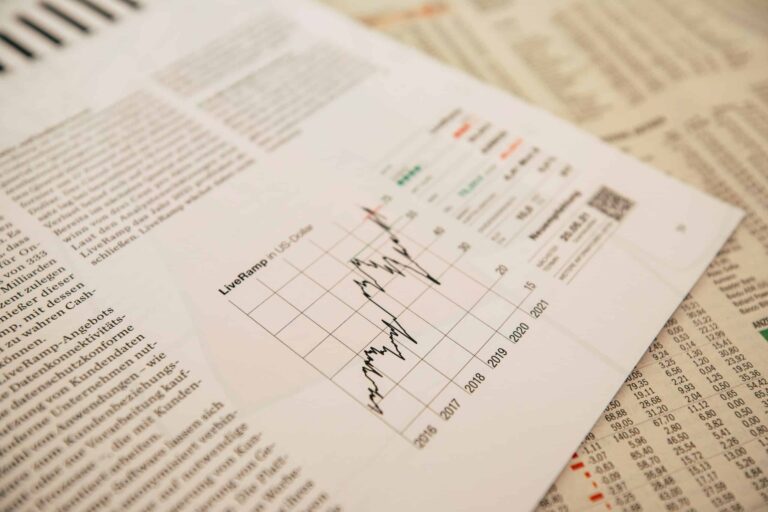Have you ever heard of stagflation? Have you ever been curious about it or how it affects the economy? Stagflation is an economic phenomenon that has been seen throughout history and can have profound implications for modern-day economies.
In this article, we will explore the definition of stagflation, as well as its effects on the economy. By understanding stagflation, we can gain insight into the economic health of a nation and how it affects our daily lives.
Table of Contents
What is stagflation
Stagflation is an economic term used to describe a situation where both inflation and unemployment are high, leading to slow economic growth or even contraction.
A consistent rise in the average price of goods and services is referred to as inflation, while unemployment is a measure of the number of people who are not employed but actively seeking employment.
The term was first coined in 1965 by British politician Iain Macleod to describe Britain’s economic situation at the time.
Causes of stagflation
Stagflation is an economic situation of slow growth, high unemployment, and high inflation. It occurs when the rate of inflation is higher than the rate of economic growth, which results in a decrease in demand and supplies shock.
This can be attributed to multiple factors, such as a negative output gap, high prices, and an inflation rate.
1. Decrease in demand and supply shock
A decrease in demand means that fewer people are willing to purchase goods and services due to high prices or low incomes, while a supply shock is an event that causes changes in the cost of production, such as an increase in the price of raw materials, labor costs, etc. This can lead to stagnation as businesses have less incentive to invest and produce.
2. Negative output gap
A negative output gap is an economic situation where the actual output of production falls below the potential output due to demand or supply-side issues. This leads to a decrease in employment, wages, and, eventually, aggregate demand.
3. High prices/inflation rate
High prices and inflation rates can also cause stagflation as people’s purchasing power decreases, and people are not willing to buy products. The rising prices lead to an increase in the cost of production, and as a result, businesses have less incentive to invest and produce goods.
Effects of stagflation
The phenomenon of stagflation occurs when an economy experiences a combination of high inflation, high unemployment, and low economic growth.
During stagflation, the purchasing power of consumers is eroded by rising prices, while their ability to buy new goods or services is inhibited by a lack of employment. This leads to decreased production output over time.
1. Economic recession
Stagflation can cause a severe economic recession. As the cost of living rises due to high inflation, people tend to reduce spending on non-essential goods and services. This reduces demand for such goods and services, thus causing businesses to cut production, leading to job cuts. With less money circulating in the economy, it is difficult for businesses to finance new investments, further exacerbating the economic recession.
2. Decline in investment
Stagflation can also lead to a decline in investment. Businesses may be reluctant to make new investments due to the uncertain economic outlook and rising prices of materials, labor, and other resources. This can have a ripple effect on the economy as businesses are unable to hire more workers and expand operations.
3. Low growth rate
Stagflation can also lead to low economic growth due to the reduced demand for goods and services caused by high prices, combined with insufficient investment in new projects. Low economic growth then leads to lower incomes for households as businesses are unable to pay higher wages or generate enough profits to increase production and investment.
4. High unemployment rate
A high unemployment rate is another key effect of stagflation. As businesses are unable to maintain their operations, they reduce the number of employees in order to cut costs and survive. This leads to a rapid rise in unemployment as people start to lose their jobs and become unable to find new ones.
5. Decreased production output
Finally, decreased production output is yet another significant effect of stagflation. As businesses are forced to reduce their production capacity due to high unemployment, this leads to a decrease in the total amount of goods and services produced by an economy. This is further compounded by the fact that people cannot afford these goods and services due to their reduced purchasing power.
Solutions to combat stagflation
Have you ever experienced an economy in which prices continually rise while economic growth and employment remain stagnant? If so, then you know firsthand the challenges of stagflation. This phenomenon can seem impossible to escape without drastic measures. Let’s explore some solutions that may help to combat stagflation and keep the economy healthy.
1. Expansionary fiscal policy
One of the most effective solutions to combat stagflation is expansionary fiscal policy. This policy involves increasing government spending on public goods and services. This is happening by reducing taxes and raising the overall level of aggregate demand.
Expansionary fiscal policy also reduces unemployment by creating more jobs. It also reduces the cost of labor, which in turn boosts overall economic output.
2. Expansionary monetary policy
Another solution to combat stagflation is expansionary monetary policy. This policy involves cutting interest rates and increasing the money supply in order to stimulate economic growth.
By reducing the cost of borrowing, this policy increases consumer spending. It also focuses on investment, and business activity, which helps to increase economic growth.
3. Supply-side policies
Finally, supply-side policies can help to combat stagflation by increasing the economy’s productive potential. These policies involve measures such as reducing regulations, encouraging innovation, providing tax cuts for businesses, and increasing investment in research and development.












